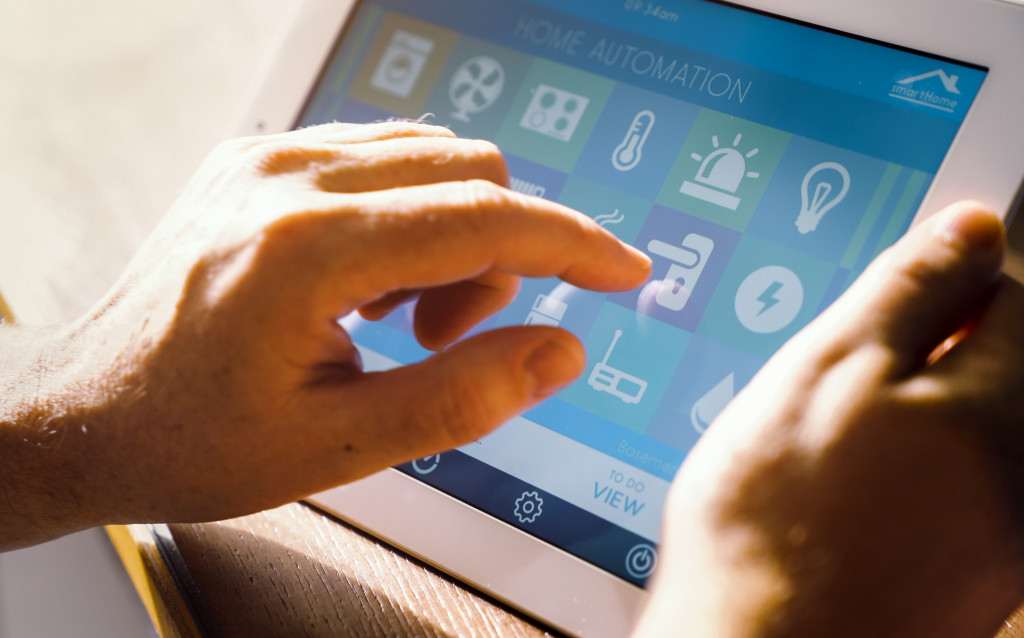Technology makes our lives better and easier. Hence, the answer to the question, “Why do you have to make your home a smart home?” is simple: to make your life better and easier.
In an article published by CNBC, a smart home is defined as a house equipped with smart products used to control and automate home settings such as temperature, lighting, and entertainment. Control can be done either through a phone, tablet, or computer system.
A traditional home can be turned into a technologically advanced home simply by installing a system and using smart gadgets. The home setting you want to automate will determine the type of smart product you need to use to upgrade your home.
DIY Smart Homes
Sometimes, upgrading your home into a smart one can be expensive. But there are some affordable gadgets you can buy to get started with your smart home journey.
The most common smart gadget in homes nowadays is the smart speaker. A smart speaker is activated by using virtual assistants like Alexa, Google Assistant, or Siri. Some smart speakers are intelligent enough to control music options, volume, and thermostats.
CNET lists Amazon Echo (fourth generation) and Google Nest Mini as some of the best smart speakers existing in the market today. Amazon Echo has Alexa as its virtual assistant, while Google Nest Mini has Google Assistant. Depending on which product you choose, your installation process will differ. But all these speakers will need two things in common: a power outlet and a wireless Internet connection.
Meanwhile, smart lighting is one of the easiest home settings you can upgrade; it is also one of the most common entryways for smart home beginners. A smart light can be controlled either through an app on your smartphone or your smart speaker. Hence, an internet connection is also necessary.
There are different types of smart lighting. First, there are smart light bulbs that you can easily replace with ordinary bulbs. Smart light strips, on the other hand, are installed with an adhesive and can be placed in hard-to-reach areas. Meanwhile, some smart lights are battery-operated and can be placed anywhere you want.
For 2021, The New York Times lists Philips Wiz Smart Wi-Fi LED Color Bulb as the best smart LED light bulb for affordability and practicality. As it is affordable, it makes switching to smart lighting easier for everyone. It is also flexible because it can be controlled through different digital assistants, whether it be Alex, Siri, Samsung SmartThings, or Google Assistant.
Consulting Experts
For a non-tech savvy, installing smart home gadgets, no matter how simple, may be tough. This is where the experts come in. If you do have the resource, the best way to fully go smart is through consulting a professional in the field.
Some people are lucky enough to think of fully automating their homes in the design phase of their property. However, others with existing homes have just caught up with technology and have just decided to jump in on the trend. For these properties, though, the current electrical system may not be able to accommodate the requirements of a smart home.
As major rewiring may be needed, it is best to have a professional assess your home before proceeding with the automation. Assessment is also needed for homes with a fully automated system that suddenly stopped working. Since most smart systems are highly dependent on electricity, the root cause may be electrical wiring. When this happens, it is best to ask for an electrical inspection report from a professional.
The Perks
The convenience that a smart home brings is definitely undeniable. Imagine not having to run around just to close the light switch for every part of your home. Or imagine just relaxing by your bed while asking Alexa or Siri to play your favorite song. Certainly, technology has its perks.
But beyond convenience, a smart home can also help you save on energy consumption. You don’t only conserve your own energy from switching off the lights; you also conserve electricity because you can quickly do it with a simple tap on the iPad. Some smart home systems also provide insights into energy usage. Through this, you become more aware of your consumption and more mindful of how you use your gadgets.
Finally, having a smart home is having a cool home. Whether we deny it or not, being updated and in the loop with the latest innovations can be sometimes fun to brag about. There is also a sense of pride when you do a DIY smart home. There is nothing more satisfying than upgrading your old home into an intelligent one, and honestly, it makes you look and feel smart, too.


